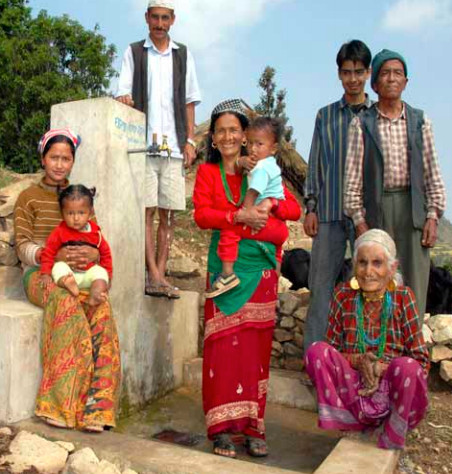Difference between revisions of "Water Portal / Rainwater Harvesting / 3R (Recharge, Retention & Reuse)"
(→Description & results) |
(→Documents, videos and links) |
||
| Line 24: | Line 24: | ||
* PDF: [https://assets.helvetas.ch/downloads/13_waterusemasterplan_wump_blau_final_engl_a4_portrait.pdf WATER USE MASTER PLAN (WUMP): A concept to equitably share water resources within and amongst rural communities]. HELVETAS PROJECT EXPERIENCE. | * PDF: [https://assets.helvetas.ch/downloads/13_waterusemasterplan_wump_blau_final_engl_a4_portrait.pdf WATER USE MASTER PLAN (WUMP): A concept to equitably share water resources within and amongst rural communities]. HELVETAS PROJECT EXPERIENCE. | ||
* [http://www.bebuffered.com Be Buffered: This Area is Prepared for Floods and Droughts, is Yours?] 3R Water Secretariat. | * [http://www.bebuffered.com Be Buffered: This Area is Prepared for Floods and Droughts, is Yours?] 3R Water Secretariat. | ||
| + | * ARTICLE: [http://www.water-energy-food.org/en/practice/view__353/managing-the-water-buffer-for-climate-change-adaptation-and-food-security.html Managing the Water Buffer: For Climate Change Adaptation and Food Security]. By Ethiopian Institute of Water Research, Federal Institute for Geosciences and Natural Resources and MetaMeta. | ||
Revision as of 08:29, 2 May 2013

3R planning tool
In WASH programmes, domestic water supply, sanitation and hygiene focus mainly on a household or community level and not on an area or catchment, as in Integrated Water Resource Management programmes. However, more and more linkages are made between WASH programmes and other sectors like food and energy. This requires a rethinking of WASH programmes and moving from a community approach towards a catchment approach.
Due to increasing water demands and the negative impacts of climate change, it is crucial to effectively and efficiently store water within a catchment. The 3R (Recharge, Retention and Re-use) approach does not only enhance buffer management in a catchment for both water and food security, but also supports communities to work together in facing water scarcity and managing the resources in their catchment. However, integrating the 3R approach in local planning and implementation is still a challenge.
Requirements & limitations
This planning tool focuses on projects carried out by the 3R consortium in Ethiopia and Nepal. Although the aim is to develop a planning tool, which can be applied in different contexts, it will not be possible to simply apply the tool for Ethiopia and Nepal to any other country without some adaptations. The planning tool will be mainly developed for non-governmental and governmental actors working in the field of water management and spatial planning.
Description & results
In Nepal of 2012, RAIN and Acacia Water started to develop the 3R methodology, which supports implementing organisations to integrate the 3R approach into their project planning. This method enables opportunities and challenges within an area to be included by looking at both the physical and social environment. MetaMeta and RAIN worked in 2012 on building capacity of local governments on 3R as part of the existing natural resource management framework in Ethiopia. Both projects showed that there is a strong need for 3R as a planning tool in water management projects. But knowledge, capacity and commitment are needed to actually change current planning processes of non-governmental and governmental organisations.
To respond to this need, RAIN and its partners within the 3R consortium will develop a 3R planning tool and practical training modules:
- In Nepal, RAIN is working together with Helvetas Swiss Int. Nepal to develop a similar 3R module for their WUMP planning tool,
- In Ethiopia, RAIN and MetaMeta are developing training modules for 3R planning and implementation.
Documents, videos and links
- PDF: WATER USE MASTER PLAN (WUMP): A concept to equitably share water resources within and amongst rural communities. HELVETAS PROJECT EXPERIENCE.
- Be Buffered: This Area is Prepared for Floods and Droughts, is Yours? 3R Water Secretariat.
- ARTICLE: Managing the Water Buffer: For Climate Change Adaptation and Food Security. By Ethiopian Institute of Water Research, Federal Institute for Geosciences and Natural Resources and MetaMeta.
